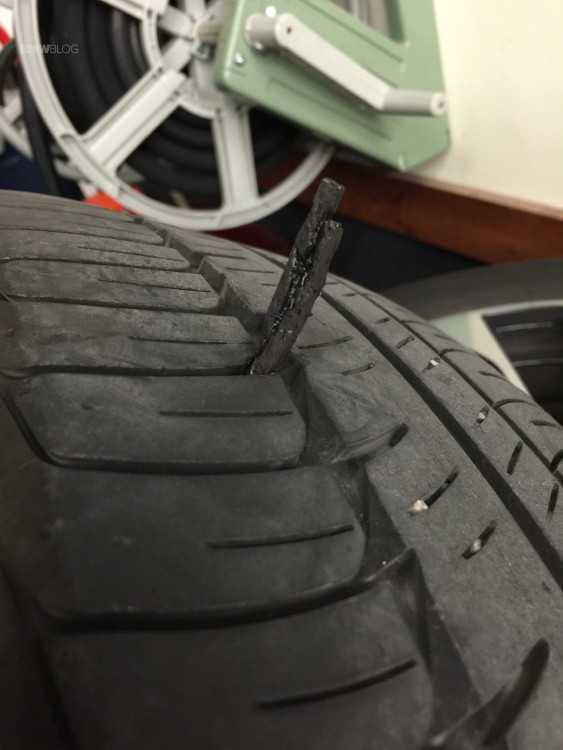In the event of a catastrophic blowout, run-flat tires are engineered to stay on the rim. These tires have a gel layer under the tread surface and are self-sealing. If it breaks, the gel will immediately build a seal around the hole in the debris. They are usually irreversible. The majority of newer vehicles come standard with run-flat tires.
After they’ve been cut or punctured, run-flat tires can be driven “flat” to some extent at a slower speed. You’ll have enough time to get to a mechanic. However, the distance and speed that run-flat tires can travel after being punctured are determined by the tire brand and the vehicle’s current weight.
Inspect the tires for certain codes and marks to identify run-flat tires:
Examine your tiresWith the use of a flashlight, examine the tire’s sidewall. By inspecting the features of your tire, you can usually tell if it is run-flat.
Look for words like “run-flat,” as well as markings and codesSome tires are clearly labeled as “run-flat” on the side of the tire for easy identification. Look for codes like ZP, RFT or ROF (Run-Flat Tire/Run On Flat), SEAL, or marks like a flat tire with an arrow pointing away from it. If necessary, use a magnifying glass to see the symbols. Inspect the rim section of the tire because many run-flat tires feature plastic load-bearing slugs instead of standard rubber rims linked to the wall.
Here are some brands and their codes:
Bridgestone – RFT/ROF/RSC (Run Flat Tires/Run On Flat/Run-Flat System Component)
Continental – SSR (Self-Supporting Run Flat)
Dunlop – DSST (Dunlop Self-Supporting Tire) or DORT (Dunlop Off-Road Tire)
Goodyear – ROF or EMT (Run On Flat/Extended Mobility Technology)
Pirelli–RSC (Run Flat System Component)
Yokohama – ZP (Zero Pressure)
Michelin – ZP or ZPS (Zero Pressure or Zero Pressure System)
Other brands – ZP or ZPS (Zero Pressure or Zero Pressure System)
Here’s another way to tell if your tires are flat:
 If your tires are run-flat, the manual will explain why. It comes with a Tire Pressure Monitoring System.
If your tires are run-flat, the manual will explain why. It comes with a Tire Pressure Monitoring System.If you’re still not sure, ask your car dealer if the vehicle has run-flat tires.
If you are unsure whether your car is fitted with run flat tyres, they can be easily identified by the symbols on the sidewall of the tyre.
Rather than a standardised code to represent run flat tyres, most premium and mid-range tyre manufacturers have their own codes and symbols to indicate whether a tyre has run-flat capability.
We highlight all run flat tyres using RFT regarless of manufacturer naming conventions. Big name brands include Continental, Michelin, Bridgestone and Goodyear. Below are the brands that have run flat tyres:
Bridgestone's revolutionary run flat technology, ROF (RunOnFlat), RFT (Run flat tyre) or RSC (Run-flat System Component) was developed with a thinner sidewall than other run flat tyres. This technology guarantees enhanced comfort levels when driving.
Dueler H/P Sport
Prices from £56.97 View all sizes
Potenza RE050A
Prices from £100.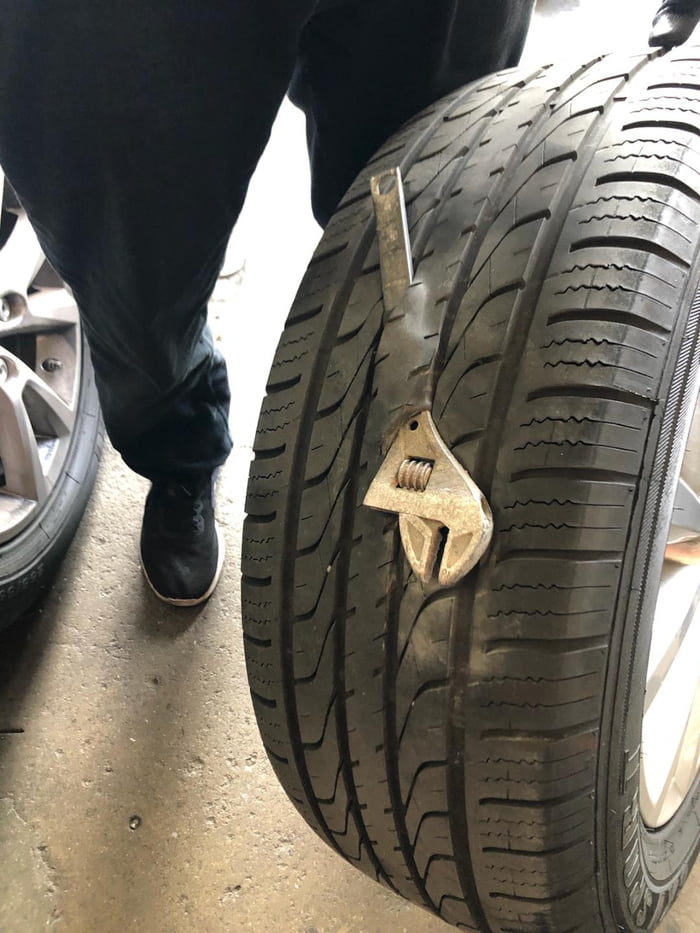 47 View all sizes
47 View all sizes
Potenza S001
Prices from £80.43 View all sizes
Turanza T005
Prices from £71.18 View all sizes
Continental developed their SSR (self-supporting run flat) technology for low section tyres that can fit all standard rims. Continental run flat tyres are available in the treads below.
ContiPremiumContact 6
Prices from £79.09 View all sizes
ContiSportContact 5
Prices from £95. 99 View all sizes
99 View all sizes
EcoContact 6
Prices from £59.29 View all sizes
SportContact 6
Prices from £124.57 View all sizes
Dunlop offers a range of run flat tyres available with ROF (RunOnFlat) and DSST (Dunlop Self-Supporting Technology). Run flat tyres are developed with a special compound that allows more flexibility in the tyre for a more comfortable drive than other run flats.
SP SportMaxx GT
Prices from £107.95 View all sizes
SP SportMaxx RT
Prices from £77.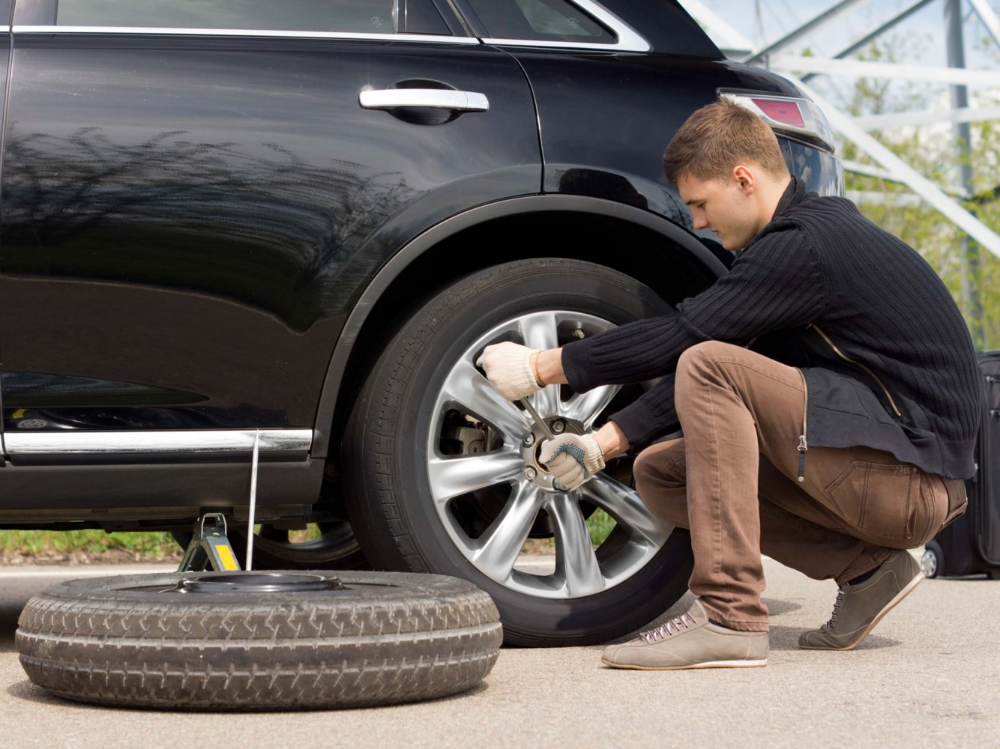 98 View all sizes
98 View all sizes
SP SportMaxx RT2
Prices from £85.97 View all sizes
Goodyear run flat tyres feature the ROF (Run on Flat) and EMT (Extended Mobility Technology). Developed with convenience in mind, these run flat tyres are available for a range of tyre types and sizes.
Eagle F1 Asymmetric 3
Prices from £93.07 View all sizes
Eagle F1 Asymmetric 5
Prices from £90.96 View all sizes
Eagle Sport All Season
Prices from £148.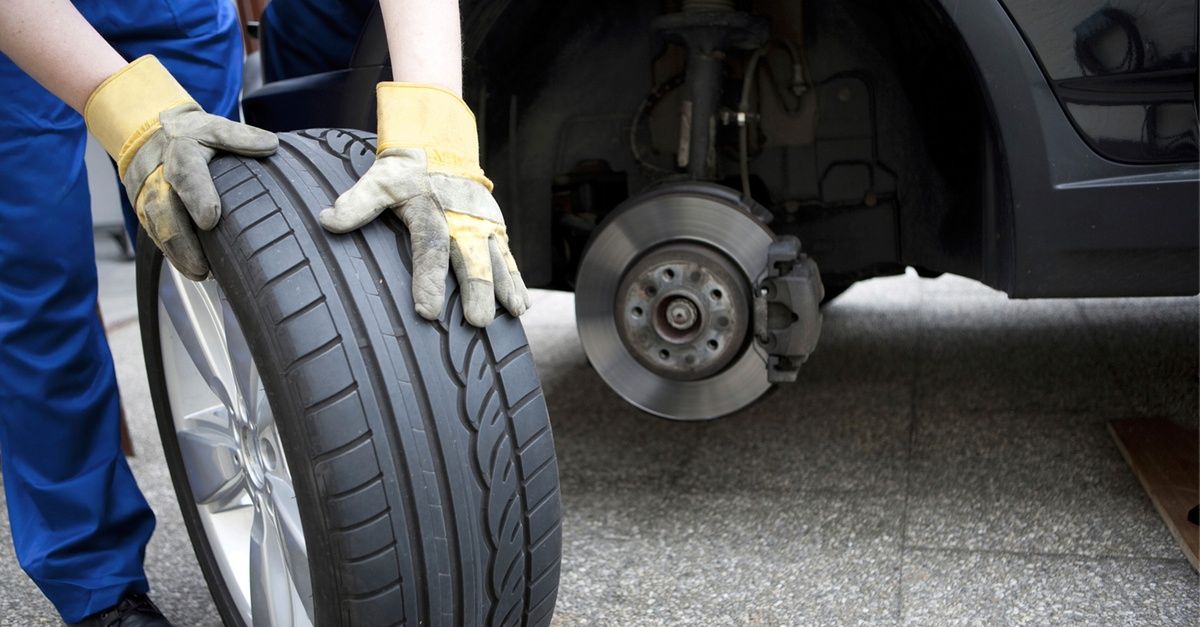 47 View all sizes
47 View all sizes
EfficientGrip
Prices from £80.08 View all sizes
Michelin integrated their ZP (Zero Pressure) run flat technology to existing tyre models in order to enhance their performance. Michelin run flat tyres are available in 3 models, offering excellent comfort and improved safety, so you can drive to a safe location to change your Michelin run flat tyre even with a puncture.
Latitude Sport
Prices from £153.00 View all sizes
Pilot Sport 4
Prices from £95.65 View all sizes
Primacy 3
Prices from £97. 98 View all sizes
98 View all sizes
Primacy 4
Prices from £76.98 View all sizes
Pirelli’s RSC (Run-flat System Component) technology helps the driver keep control of the car after the tyre loses pressure, by offering extra stability and handling. Pirelli’s run flat tyres are available in 3 models, suitable for a range of vehicles and sizes.
Cinturato P7
Prices from £70.83 View all sizes
P Zero
Prices from £92.00 View all sizes
P Zero PZ4
Prices from £103. 46 View all sizes
46 View all sizes
Scorpion Verde
Prices from £99.73 View all sizes
How to find out on the go that a tire has been punctured
Nokian Tires It is important to stop in time so as not to completely ruin the tire and disc. But sometimes it’s not easy to notice such a nuisance - how do you know that a wheel has been pierced?The comfort of most modern cars plays a cruel joke on us with some malfunctions. Highly effective noise and vibration isolation, amplifiers and servos on the controls often “do not allow” the driver to receive signals that are sent to him by problem nodes. To a large extent this concerns problems with the wheels.
If you drive a couple of hundred meters on a completely flat tire at speed, the tire will almost certainly have to be thrown away.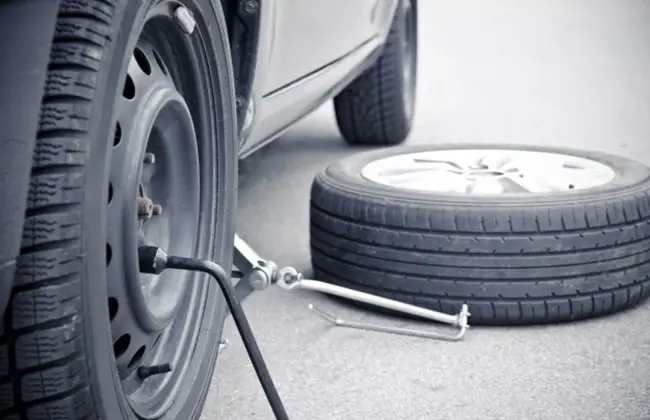
True, well-equipped vehicles have a TPMS (tire pressure monitoring system), which raises an alarm when the pressure drops or the temperature rises in the tire(s). But for most Ukrainian motorists, such electronics are not yet available.
See also: Why tires are flat all the time: reasons and what to do
The typical signs of a flat tire have been known for a long time, but, alas, they "work" differently on different cars, different roads, with different tire models and even with different passenger compartment loads. And yet, these are the symptoms.
 This noise is not always obvious and is often not perceived in the cabin as an emergency.
This noise is not always obvious and is often not perceived in the cabin as an emergency. A half-flat tire is harder to see on the move, but such a ride ruins the tire, even if the road is flat: rubber and carcass suffer from overheating.
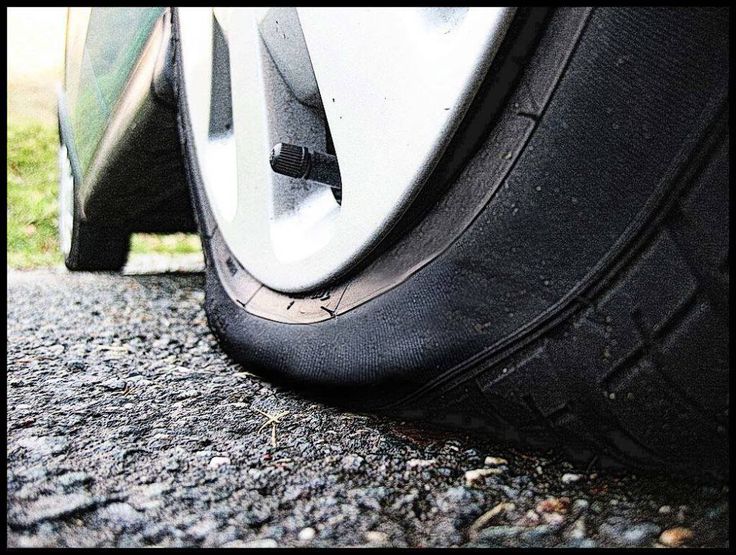 Alas, it is not always possible to distinguish ordinary discomfort on potholes from emergency.
Alas, it is not always possible to distinguish ordinary discomfort on potholes from emergency. See also: How to choose wheel covers
Fortunately, modern tires do not start to lose air out of the blue. If they are not worn to the threads, then they are not afraid of sharp pebbles on the pavement, or dry branches on country roads. Therefore, you need to especially listen to the tires first of all after driving over obviously dangerous obstacles - boards with nails, scattered garbage, scrap metal lost by someone, etc.
The TMPS kit can be purchased and installed on any car, the main thing is to choose a product of the highest quality.
And of course, after a serious hit in an asphalt pothole or hitting a curb with a wheel, you need to stop and evaluate the condition of the tire and rim. At the same time, keep in mind that with some types of damage, air does not escape from the tire immediately, but within a few minutes.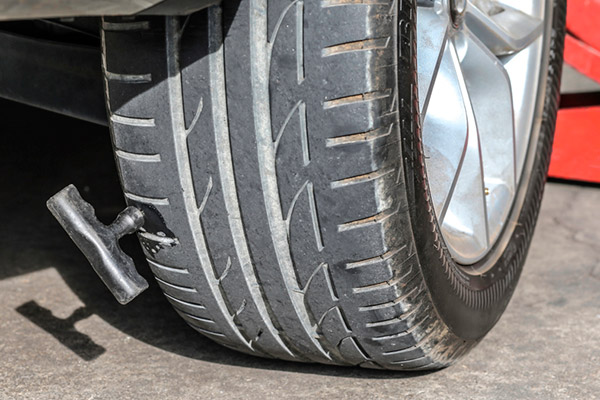 If you often have to drive on rough roads, at least install an inexpensive TPMS kit on your car - these are sold in abundance in stores and on related sites.
If you often have to drive on rough roads, at least install an inexpensive TPMS kit on your car - these are sold in abundance in stores and on related sites.
Loud music in the cabin has been the cause of big and small troubles in thousands and thousands of cases: from chewed tires to shreds and "rattling" engines to brutal accidents due to someone's unheard horn. When driving on bad roads, try to listen to the operation of the machine, its sounds and behavior. Well, if music is dearer to you than the safety of the car (this also happens), take two spares with you. A do-it-yourself TPMS system is also a good option, but electronics will not replace the spare tire.
See also: What is the difference between premium and budget tires
Irina Zverkova
Estimated reading time: 4 minutes
134279
RIA Novosti
Tires are one of the most important components of a vehicle to ensure driving safety.![]() Proper use of summer and winter tires during the season improves handling and saves the car owner money. But some drivers not only postpone changing tires depending on the weather, but also continue to use the same tires for several seasons. At the same time, wheel wear becomes more and more, and the threat that the tires will not cope with holding the car increases.
Proper use of summer and winter tires during the season improves handling and saves the car owner money. But some drivers not only postpone changing tires depending on the weather, but also continue to use the same tires for several seasons. At the same time, wheel wear becomes more and more, and the threat that the tires will not cope with holding the car increases.
The tire tread is responsible for connecting the car to the road. This is the outer layer of rubber, which contains a certain pattern, suitable for different operating conditions. For summer tires, the removal of water from the contact patch is relevant, for winter tires - improved grip on slippery surfaces, for off-road tires - maximum cross-country ability. Regardless of the purpose of the tire, one of the important characteristics of the tread is its height or depth. This is the distance from the outer edge of the tire to the "bottom" of the groove. For new modern car tires, the height starts from 5 mm. For ordinary summer passenger tires, this value is 6–8 mm, for winter tires it is 8–10 mm, for SUVs it is 15–20 mm.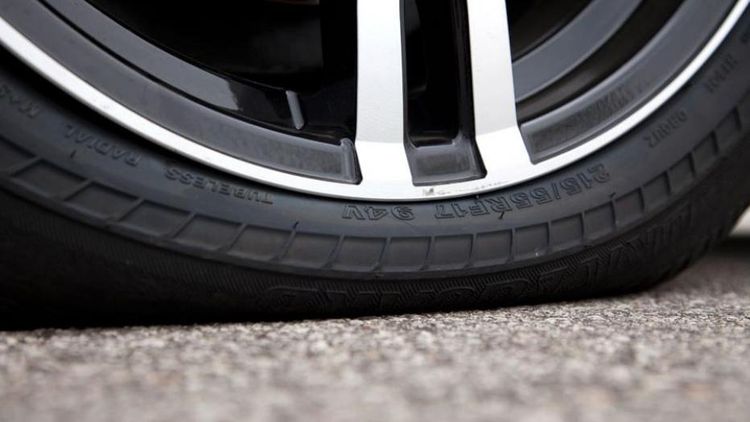
When the tread wears out (reducing its depth), the driving properties are the first to suffer: the car is more prone to aquaplaning. Winter tires lose some of their properties, which are provided by special sipes and studs. It is important to consider that different brands and models have different rubber composition, so some wheels “run” longer. The driving style also affects wear - more aggressive starts and active braking shorten the life of the tire.
9 is considered critical for tire wear0022 tread height of 1.6 mm for summer tires and 4 mm for winter .
Height can be measured using the ruler with the depth gauge or vernier caliper.
Those who do not have such tools can use a regular 10-kopeck coin placed in one of the grooves. If the word "kopecks" is hidden, it means that the tire is almost new and does not require replacement. If the tread covers only the floral ornament on the winter tire, then it will soon need to be changed; if it’s in the summer, the replacement will have to wait. If only the rim of the coin is hidden, you need to urgently install new tires.
If only the rim of the coin is hidden, you need to urgently install new tires.
Many modern manufacturers make wear indicator on tires (this is a protrusion perpendicular to the axis of rotation of the tire) or lay a special colored layer that becomes visible when the tire is erased. Their manifestation serves as a signal for the car owner to change tires.
It is important to monitor not only the tread depth, but also the wear uniformity . To be sure that the wheel is in good condition, it is better to measure the tread depth at different places around the circumference along the entire width of the tire. If the inner or outer part is worn out more, then the wear of the tread is taken into account at a minimum value, and it is better for the owner to check the wheel alignment / collapse of the car.
If the vehicle has frequently been driven on bumpy roads, climbed curbs, or the tires have been run half-flat, the sidewalls may have dents, cuts, or cracks that are not completely broken through.